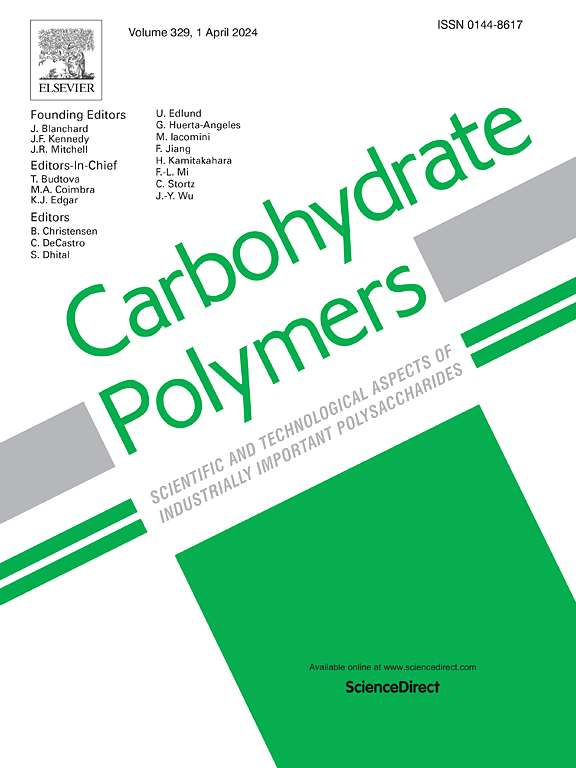Gut microbiota and metabolic profile affected by pectic domains during in vitro rat fecal fermentation: A comparative study between different glycans rich in pectic monosaccharides
IF 10.7
1区 化学
Q1 CHEMISTRY, APPLIED
引用次数: 0
Abstract
This study aimed to investigate in vitro rat fecal fermentation behavior of pectic polymers and glycans that constitute typical pectic fragments, i.e. homogalacturonan (HG), arabinan (AB), arabinogalactan (AG), rhamnogalacturonan (RG), and xyloglucan (XG). Results showed that galacturonic acid proportion of HG (73.85 mol%) was the highest, followed by pectin (67.99 mol%), whereas arabinose (70.23 mol%) and galactose (86.22 mol%) enriched in AB and AG, respectively. Absolute quantitative microbiome revealed that Bacteroides showed dramatic growth in RG and AG; higher absolute abundances of Bifidobacterium (5.06E+09 and 3.36E+09 copies/g feces, respectively) were found in AB and XG; Escherichia Shigella, Enterococcus, and Klebsiella were inhibited after fermentation with pectin and HG by >95 %. Untargeted metabolomics indicated that the differential metabolite in AG and RG were 7-ketodeoxycholic acid and 9,10-epoxyoctadecanoic acid, respectively, both of which were positively related to arabinose and galactose (p < 0.001). Besides, another characteristic monosaccharide, rhamnose was positively correlated with succinic acid (p < 0.05), and Parvibacter (p < 0.001). Overall, this work help to understand the interactions among pectin structure, gut microbiota and metabolites, thereby guiding the targeted design of the nutrient-directed pectins in future personalized diets.

求助全文
约1分钟内获得全文
求助全文
来源期刊

Carbohydrate Polymers
化学-高分子科学
CiteScore
22.40
自引率
8.00%
发文量
1286
审稿时长
47 days
期刊介绍:
Carbohydrate Polymers stands as a prominent journal in the glycoscience field, dedicated to exploring and harnessing the potential of polysaccharides with applications spanning bioenergy, bioplastics, biomaterials, biorefining, chemistry, drug delivery, food, health, nanotechnology, packaging, paper, pharmaceuticals, medicine, oil recovery, textiles, tissue engineering, wood, and various aspects of glycoscience.
The journal emphasizes the central role of well-characterized carbohydrate polymers, highlighting their significance as the primary focus rather than a peripheral topic. Each paper must prominently feature at least one named carbohydrate polymer, evident in both citation and title, with a commitment to innovative research that advances scientific knowledge.
 求助内容:
求助内容: 应助结果提醒方式:
应助结果提醒方式:


